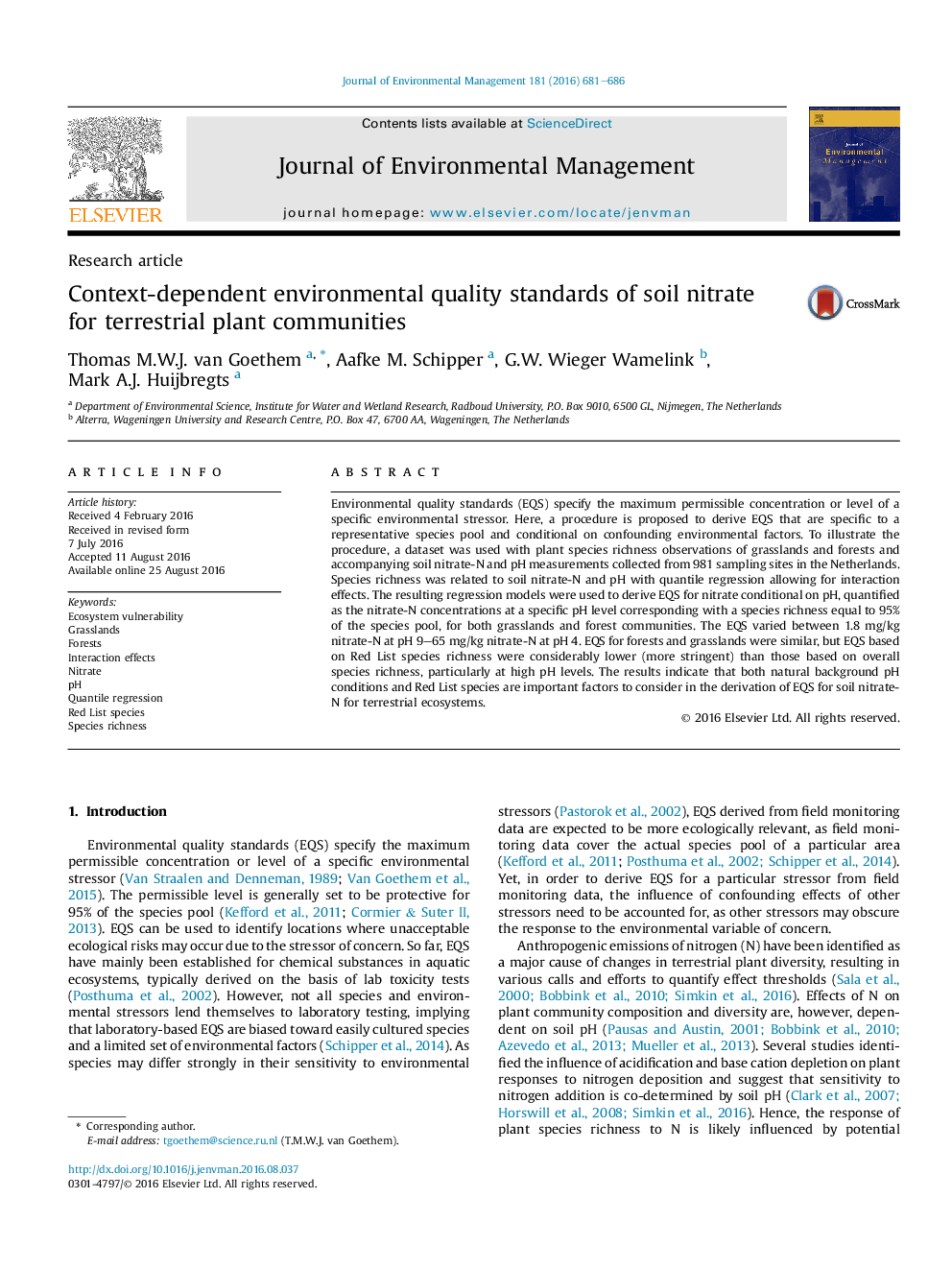| Article ID | Journal | Published Year | Pages | File Type |
|---|---|---|---|---|
| 7479814 | Journal of Environmental Management | 2016 | 6 Pages |
Abstract
Environmental quality standards (EQS) specify the maximum permissible concentration or level of a specific environmental stressor. Here, a procedure is proposed to derive EQS that are specific to a representative species pool and conditional on confounding environmental factors. To illustrate the procedure, a dataset was used with plant species richness observations of grasslands and forests and accompanying soil nitrate-N and pH measurements collected from 981 sampling sites in the Netherlands. Species richness was related to soil nitrate-N and pH with quantile regression allowing for interaction effects. The resulting regression models were used to derive EQS for nitrate conditional on pH, quantified as the nitrate-N concentrations at a specific pH level corresponding with a species richness equal to 95% of the species pool, for both grasslands and forest communities. The EQS varied between 1.8Â mg/kg nitrate-N at pH 9-65Â mg/kg nitrate-N at pH 4. EQS for forests and grasslands were similar, but EQS based on Red List species richness were considerably lower (more stringent) than those based on overall species richness, particularly at high pH levels. The results indicate that both natural background pH conditions and Red List species are important factors to consider in the derivation of EQS for soil nitrate-N for terrestrial ecosystems.
Keywords
Related Topics
Physical Sciences and Engineering
Energy
Renewable Energy, Sustainability and the Environment
Authors
Thomas M.W.J. van Goethem, Aafke M. Schipper, G.W. Wieger Wamelink, Mark A.J. Huijbregts,
